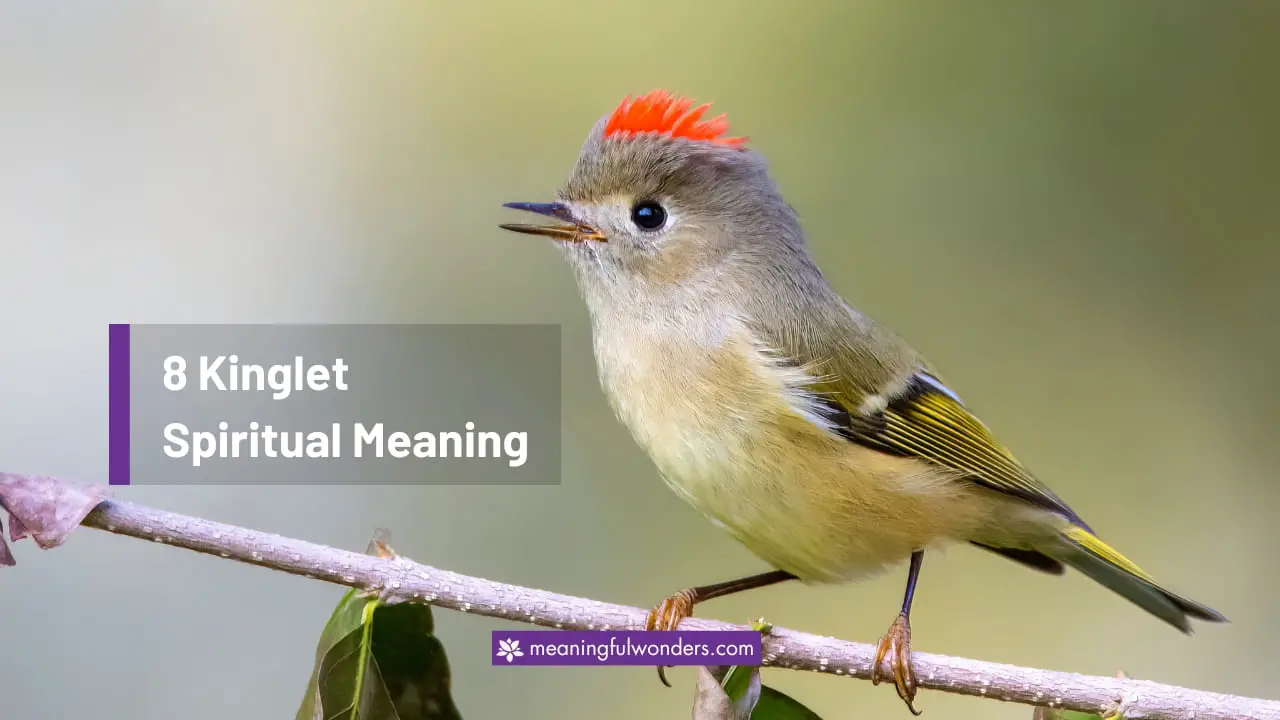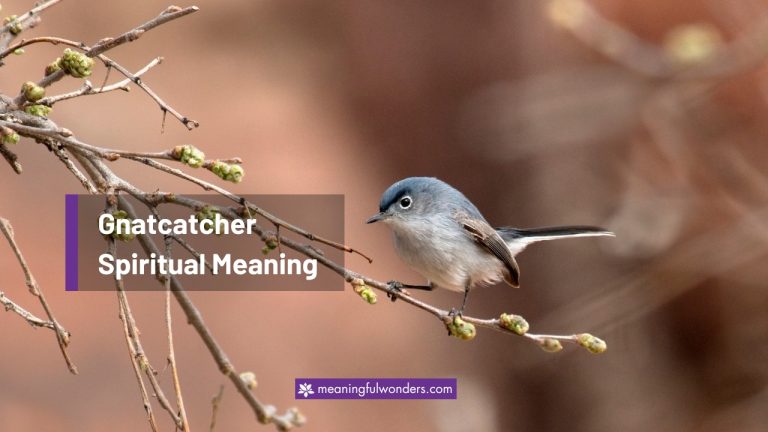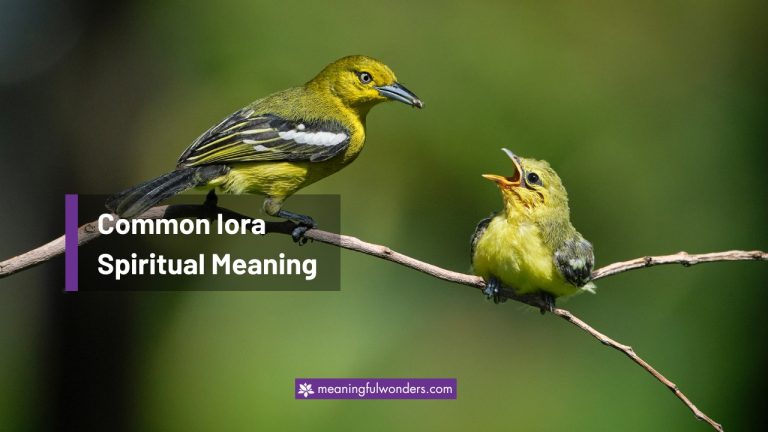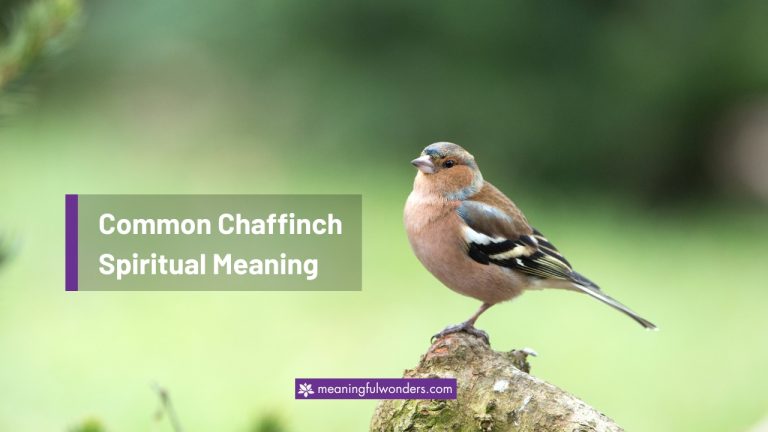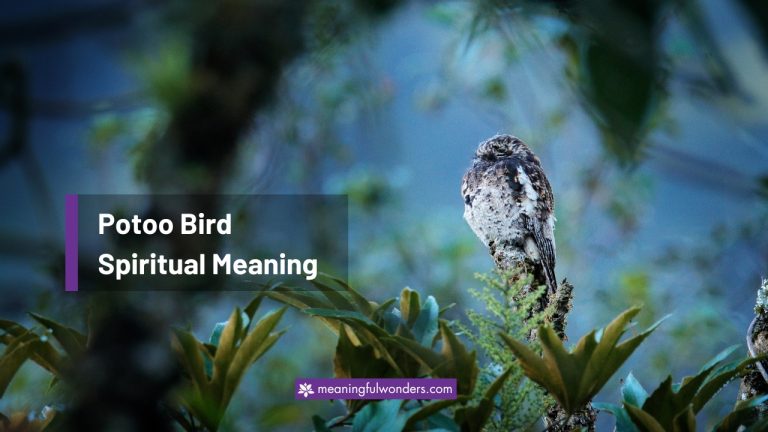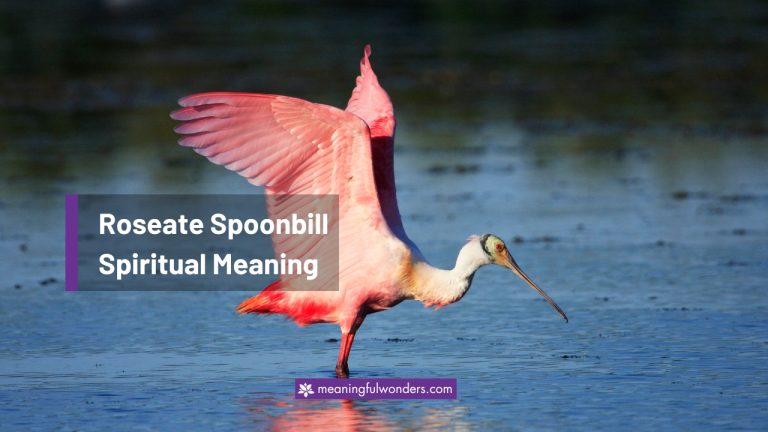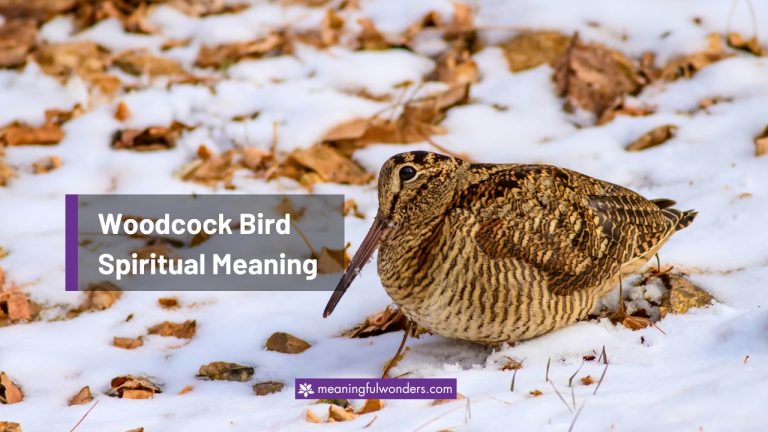Kinglet Spiritual Meaning: Messenger of Hope and Renewal
The kinglet is a small bird known for its energetic and lively nature. It belongs to the family Reguliidae, which includes four species.
In many cultures, the kinglet holds symbolic meaning as a representation of joy, happiness, and positive energy.
Its small size and quick movements are often associated with playfulness and free-spirited nature.
In spiritual contexts, the kinglet is seen as a messenger of hope and renewal. Its appearance can be interpreted as a sign of new beginnings and the promise of brighter days ahead.
The bird’s song is also believed to bring cheer and light into one’s life, reminding us to embrace the present moment and find joy in the little things.
Read this blog post to learn more about kinglet spiritual meaning in different cultures and traditions.
Kinglet Spiritual Meaning and Symbolism
1. Symbolism of Joy
The kinglet is often seen as a symbol of joy and happiness.
Its bright colors, lively movements, and cheerful chirping have long been associated with feelings of joy and positivity.
The kinglet is a messenger of good news and happiness in many cultures.
2. Symbolism of Adaptability
The kinglet is a highly adaptable bird, able to thrive in a variety of environments and situations.
This adaptability is seen as a symbol of being able to go with the flow and adjust to any challenges that come your way.
The kinglet encourages us to embrace change and be open to new possibilities.
3. Symbolism of Resilience
Despite its small size, the kinglet is a resilient bird that can withstand harsh weather conditions and migration challenges.
This resilience is seen as a symbol of inner strength and determination. The kinglet encourages us to persevere through difficult times and to never give up on our goals and dreams.
4. Symbolism of Balance
When perched on branches or flitting through the trees, the kinglet’s delicate balance is often seen as a symbol of balance in life.
It reminds us to balance work and play, rest and activity, and prioritize self-care to maintain our well-being.
5. Symbolism of Intuition
The kinglet’s small size and quick movements make it difficult to spot, but those who are patient and observant may catch a glimpse of its vibrant colors and hear its soft chirping.
This symbolism encourages us to tune into our intuition and pay attention to the small details that can bring us joy and guide us on our path.
6. Symbolism of Protection
In some cultures, the kinglet is seen as a protective symbol, bringing good luck and warding off negative energies.
Its agility and sharp eyesight also symbolize the need to be vigilant and protect ourselves from physical and emotional threats.
7. Symbolism of Solitude
The kinglet is a solitary bird, often seen foraging alone or with its mate in secluded areas.
This symbolism encourages us to embrace moments of solitude and reflection, disconnect from the world’s noise, and reconnect with our inner selves.
8. Symbolism of Humility
Despite its striking appearance and lively movements, the kinglet is known to be humble and unassuming.
This symbolism reminds us to stay grounded and approach life humbly without letting our successes or failures define us.
Kinglet Spiritual Meaning and Messages
1. Message of Change
The Kinglet bird symbolizes adaptability and the ability to embrace life changes. This tiny bird has incredible survival skills and can thrive in various environments.
When this bird appears in your life, it may be a sign that you must be more flexible and open to new experiences.
Embrace change and trust that you can navigate through any challenges. Just like the Kinglet, you have the power to adapt and thrive.
2. The message of Love and Relationships
The Kinglet is a symbol of love and devotion in relationships. This bird builds strong, long-lasting bonds with their mates and works together to build their nest.
If you are going through a difficult time in your relationship, the Kinglet may remind you to work with your partner and strengthen your bond.
3. Message of Determination
Despite its small size, the Kinglet is a mighty bird that never gives up. They are determined to survive and thrive no matter the challenges.
When this bird crosses your path, it may remind you to stay determined and persevere through any obstacles in your life. Trust in your abilities and never give up on your goals.
4. Message of Playfulness
The Kinglet is known for its joyful chirping and playful nature. When this bird appears in your life, it may be a sign to let loose and have fun.
Take a break from your responsibilities and do something that brings you joy and happiness. Embrace your inner child, and don’t take life too seriously.
5. Message of Hope
The Kinglet symbolizes hope and positivity in the face of adversity. This bird is always on the move, searching for food and shelter, never losing hope or giving up.
When you see a Kinglet, it may be a message never to lose hope and keep moving forward towards your dreams. Trust that good things are on the horizon, and have faith in yourself and your journey.
Kinglet Size & Shape
The Kinglet is a small, compact bird measuring only 3-4 inches long. They have a round body shape with short tails and wings.
Despite their small size, they are strong fliers and can cover long distances during migration.
Their small size also makes them vulnerable to harsh weather conditions and predators. But the Kinglet doesn’t let this stop them from thriving and surviving.
They have adapted to their environment and developed survival skills that allow them to thrive despite their size.
This can remind humans not to let physical limitations or challenges hold us back. We, too, like the Kinglet, are resilient and adaptable beings who can overcome any obstacles in our way.
Kinglet Colors & Pattern
The plumage of kinglets is often described as dull and drab, with shades of green, brown, and gray predominating.
However, upon closer inspection, one can see that these tiny birds possess a stunning array of colors and patterns. One of the most distinctive features of kinglets’ coloration is their bright crown patch.
This small area on the top of their heads can range in color from yellow to orange to red, depending on the species.
This patch is often displayed prominently during courtship displays and may also serve as a means of identification between individuals.
Another exciting aspect of kinglet coloration is the presence of wing bars. These thin, light-colored stripes run across the secondary feathers on the wings.
They may be white, yellow, or even orange and help break up the bird’s silhouette, making it less visible to predators.
Kinglet Habitat
Kinglets, or Regulus, are tiny and colorful birds in North America, Europe, and Asia. They belong to the family Regulidae and are closely related to warblers. Habitat plays a crucial role in the survival of kinglets.
These tiny birds prefer dense coniferous forests with a mixture of deciduous trees, such as spruces, firs, hemlocks, and birches. They also need a lush understory of shrubs and herbs for nesting and foraging.
In North America, the two most common species of kinglets are the Golden-crowned Kinglet (Regulus satrapa) and the Ruby-crowned Kinglet (Regulus calendula).
Both species breed in Canada and the northern United States but can be found throughout North America during migration.
The most common species in Europe is the Goldcrest (Regulus regulus), which can be found year-round in western and central Europe.
Kinglet Feeding Behavior & Diet
Kinglets are a group of small, insect-eating birds found in the Northern Hemisphere. They belong to the family Regulidae, which includes two genera – Regulus and Corthylio.
These tiny birds’ distinct feeding behaviors and diets contribute to their unique characteristics. This article will explore kinglets’ feeding behavior and diet in detail.
Feeding Behavior
Kinglets are known for their energetic and acrobatic feeding behaviors. They are constantly on the move, flitting from branch to branch in search of insects.
They have a high metabolism that requires them to eat almost constantly to maintain their energy levels. This makes them active feeders, rarely staying in one place too long.
Kinglets also have a unique feeding behavior called “hover-gleaning.” They hover above the leaves of trees and shrubs, picking insects off the surface.
This behavior is beneficial when searching for insects on the underside of leaves or hidden among branches. Their small size and agility allow them to maneuver and capture insects while hovering effortlessly.
Diet
Kinglets are primarily insectivores, with insects making up the majority of their diet. They feed on small insects, such as flies, beetles, and caterpillars. They also consume spiders and other arthropods.
In addition to insects, kinglets supplement their diet with tree sap and fruit.
During colder months when insects are scarce, they may switch to a diet of mostly sap from coniferous trees and berries.
This helps them survive the harsh winters in their Northern habitats.
Kinglet Song & Calls
One of North America’s most recognizable and melodic birdsongs belongs to the kinglet.
These small passerine birds are known for their high-pitched, rapid trills that sound like tinkling bells.
Kinglets are also capable of producing a variety of calls, including soft chirps and chatters.
Their songs and calls are used for communication, such as attracting mates and warning of potential predators.
Their unique vocal structure allows them to produce complex and intricate songs, showcasing their impressive vocal abilities.
Kinglet Nesting, Eggs, and Young
Kinglets are tiny birds known for their quick movements and high-pitched songs.
These insect-eating birds make their homes in the northern parts of North America, Europe, and Asia.
Nesting Habits
Kinglets build nests using moss, lichen, spiderwebs, feathers, and bark.
They often choose a coniferous tree for their nest location, near the end of a horizontal branch or in a clump of moss growing on a tree trunk.
The female kinglet is primarily responsible for building the nest, while the male may help gather materials.
Egg Laying
Kinglets typically lay 5-11 eggs per clutch, depending on the species. The eggs are small and white with speckled markings, making them well-camouflaged among the nest materials.
The female will incubate the eggs for around 14 days before they hatch.
Caring for Young
Once the eggs hatch, both parents feed and care for the young kinglets. They feed their chicks insects and may supplement their diet with berries and other small fruits.
The young can leave the nest about 15 days after hatching but will continue to receive care from their parents for a few more weeks before becoming fully independent.
Kinglet Migration
The migration patterns of kinglets are fascinating to observe. These small, insect-eating birds travel incredible distances yearly for suitable breeding grounds and food sources.
Both species breed in the boreal forests of North America and Eurasia and then migrate south for the winter.
During spring migration, kinglets can be seen flying in small flocks or individually, making their way north to their breeding grounds.
They typically arrive in North America in late March to early April, with some individuals traveling as far as 3,000 miles from their wintering feet in Mexico and Central America.
The exact migration routes of kinglets are still largely unknown, but they are believed to follow North America’s eastern and western coasts.
Some individuals may travel overland through the Great Plains or across the Gulf of Mexico.
Kinglet Spirit Animal
As a spirit animal, kinglet teaches us to embrace our inner child and playfulness. It reminds us not to take life too seriously and to find joy in the little things.
Kinglet is a symbol of innocence and curiosity, urging us to approach new experiences with an open mind.
Kinglets are also highly adaptable creatures, able to thrive in different environments. This serves as a reminder for us to be flexible and versatile in our own lives.
We may encounter unexpected challenges or changes, but we can learn to roll with the punches and find creative solutions with the kinglet as our spirit animal.
In Native American cultures, the kinglet is seen as a symbol of harmony and balance. They are known for their beautiful songs and melodies, reminding us to find peace and balance.
This can mean balancing work and play or our physical, emotional, and spiritual well-being.
Kinglet Totem Animal
Many cultures have revered and admired these intriguing creatures for their unique traits and behaviors.
In Native American culture, the kinglet is considered a powerful totem animal representing various qualities and characteristics.
One of the key traits associated with the kinglet as a totem animal is its energy and vitality. Kinglets are incredibly active birds, constantly flitting from branch to branch for food and shelter.
This constant movement symbolizes the need for individuals with this totem to stay agile and adaptable.
They also represent a strong sense of perseverance and determination, as kinglets never give up in their quest for survival.
Kinglet in Dreams
In addition to being a powerful totem animal, kinglets also hold significance in the world of dreams.
Seeing a kinglet in your plan can be interpreted as a message from your subconscious, urging you to stay energetic and determined toward achieving your goals.
It can also symbolize the need for flexibility and adaptability in handling life’s challenges.
The vibrant colors of the kinglet, such as its yellow and green plumage, can also hold significance in dreams.
Yellow represents happiness and positivity, while green symbolizes growth and abundance. Therefore, dreaming of a kinglet may signify positive changes and development on the horizon.
Furthermore, the small size of the kinglet can represent humility and being content with what you have.
It reminds us to appreciate the small things in life and not get caught up in worldly desires.
Kinglet Encounter and Omens
Encountering a kinglet, a small and delicate bird known for its golden crown, is believed to be an omen of good luck and fortune.
In many cultures, seeing a kinglet is a positive sign and can bring blessings and prosperity.
The meaning of encountering a kinglet varies depending on the culture and beliefs.
Some see it as a sign of wealth and success, while others see it as a representation of wisdom and intelligence.
In some cultures, the kinglet is also seen as a messenger from the spirit world, bringing essential messages or guidance.
Encountering a kinglet can bring joy, hope, and optimism. It serves as a reminder to stay positive and embrace change.
So, if you encounter this majestic bird during your travels, consider yourself lucky and embrace the potential blessings and opportunities it may bring.
Kinglet Power Animal
As a power animal, the kinglet is known for its cheerful and energetic presence. With its vibrant colors and lively energy, this tiny bird brings joy and positivity wherever it goes.
The kinglet represents the power of staying true to oneself and living life with enthusiasm. It reminds us to embrace our unique qualities and talents, no matter how small they seem.
The kinglet symbolizes adaptability and resourcefulness, as it can thrive in various environments.
This bird is also associated with the element of air, representing both freedom and communication.
Furthermore, the kinglet is a powerful symbol of perseverance and determination. Despite its small size, it has the strength to migrate thousands of miles each year.
This serves as a reminder that even when faced with challenges, we have the inner strength and resilience to overcome them.
In Closing
Encountering a kinglet can bring positive energy and remind us to embrace change and stay true to ourselves.
The kinglet holds significant meaning in various cultures and beliefs, whether seen as a symbol of good luck, wisdom, or communication.
As a power animal, it represents joy, adaptability, perseverance, and more.
So, the next time you come across this magnificent bird, take a moment to appreciate its presence and the potential omens it may bring.
We hope this article about the Kinglet spiritual meaning has been informative and inspiring. May the kinglet continue to bring blessings and positivity into your life.

